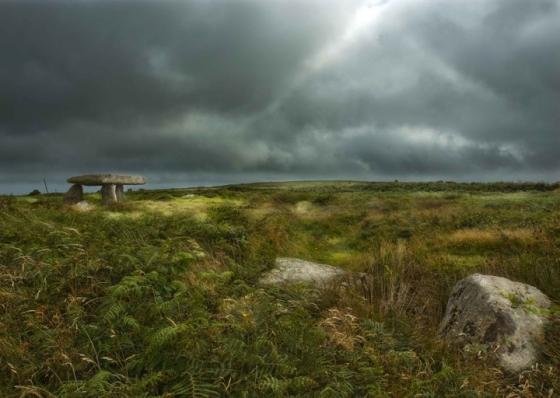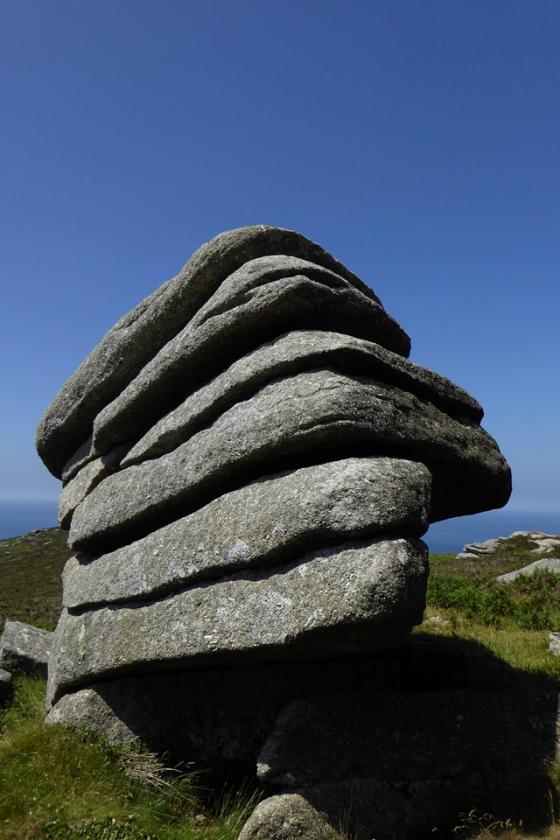
Porthmeor Menhir, photographed from the south on 10 April 2004. © Chris Bond.

Porthmeor Menhir, photographed from the south on 10 April 2004. © Chris Bond.

Porthmeor Menhir, photographed from the south-south-east on 10 April 2004. © Chris Bond.

Porthmeor Menhir, photographed from the south-east on 10 April 2004. © Chris Bond.

Porthmeor Menhir, photographed from the south-south-west on 16 August 2003. © Chris Bond.

Porthmeor Menhir, photographed from the south-south-east on 16 August 2003. © Chris Bond.

Porthmeor Menhir, photographed from the east-south-east on 16 August 2003. © Chris Bond.

May 2013

May 2013

Don’t mess with Mummy cow.

Out to sea.



... and looking east.

...looking south.

Looking SW, towards Carn Galva (where the rain came from).

This is one of those great Cornish stones that presents a completely different aspect from each of its faces.


Drove past and spotted this one ,its by a farm so could be a rubbing post (don’t believe in them myself)

A particularly fowl place, this...
>groan

The stone at Porthmeor is one that we’ve seen dozens of times, as the bus ride from St Ives round the coast goes straight past its field. Despite that, we’ve never once gone in for a closer look. Animals usually surround it – cows, horses, chickens, geese, dogs, cats and a fox have all been seen in its company over the years. But today there’s nothing, just us. A footpath runs across the field, right past the stone, so access is as easy as can be.
From the road, the stone presents a chunky, but gently curving aspect. Once closer at hand though it becomes apparent that this is one of those great standing stones that changes its appearance from each direction (not as markedly as Boswens Croft, but nevertheless). The close proximity of the houses and farm buildings does detract somewhat from the setting and atmosphere, but this is still a fine stone, worthy of your attention. Looking inland, the craggy northern edges of the moors form the backdrop, and over from that direction the sky takes on an angry complexion, promising that rain is not far away.
On an old farm map we had when we owned that land, that field was named as ‘Maen Scryfes’.
Visited 11.4.10.
Easily seen in the field opposite Porthmeor farm house on the B3306. Every time I passed the field it was full of cows – and the odd chicken! In fact the road which runs through the farm always seemed to have plenty of animals happily wandering across the road – drive slowly!
This stands in the middle of a field which had cattle in it when I visited it. As it stands at seven feet in height it’s probably too tall to be a lately erected rubbing post, anyway I’ve seen cows scratching themselves on the Men Scryfa and no one seems to doubt it’s age, well some do, but I don’t.
The moondogchickengoosestone, as we preferred to call it, stands in a field opposite Porthmeor farmhouse and whenever we happened to pass it, morning, noon or night, some kind of Old MacDonald thing was going on.... dogs, horses, geese, chooks, cows...
On the way to see the fullmoon rise over Lanyon Quoit, we passed this stone and as the car swung round the corner by this stone, the full moon appeared in the sky straight in front, almost dazzling us, huge and low and bright. And in the corner of my eye I saw a sheepdog at the roadside, spinning round and round and round chasing its tail in the moonlight.
This stone does crazy things to animals.
Porthmeor menhir
SW432372 – Ian McNeil Cooke’s ‘Standing Stones of the Land’s End’ (1998 – Men-an-Tol Studio) says “stands in mid-field by footpath; excavated in 1879 but no finds. There are confused records indicating that the present stone may be a replacement for one broken up for
road building about two centuries ago”. 2.1m tall.

















































































































































































